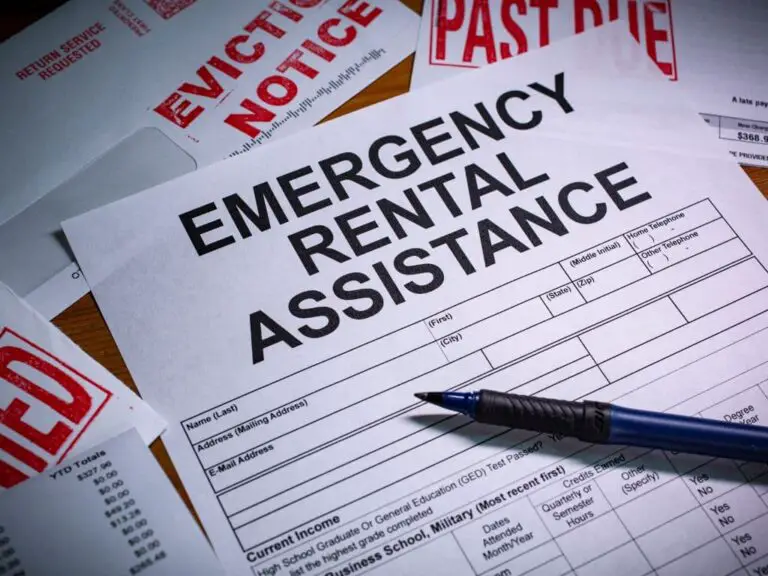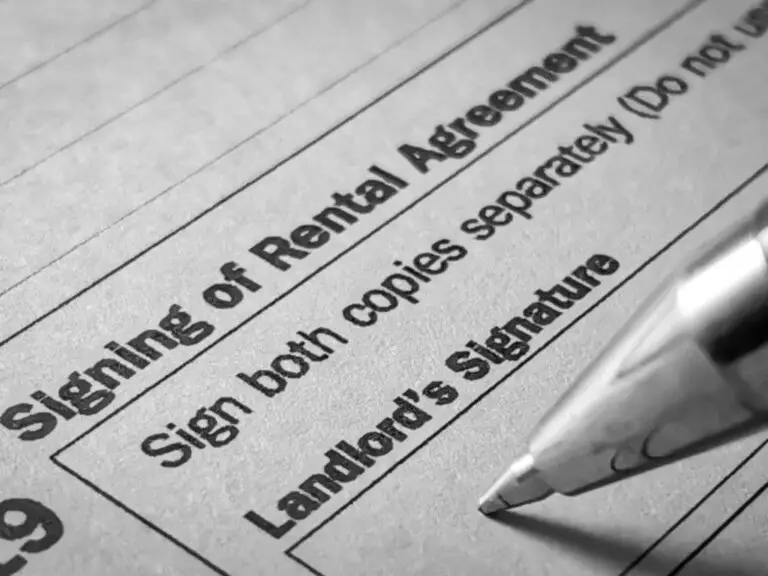Who Qualifies for Low Income Housing in California?
In the midst of California’s ongoing housing affordability crisis, many individuals and families find themselves struggling to secure adequate housing. Recognizing this urgent need, the state of California has implemented a range of Low Income Housing Programs designed to assist those with limited financial resources.
This article aims to provide a comprehensive overview of the qualifications and processes involved in applying for Low Income Housing in California.
In order to qualify for low income housing in California, individuals must meet certain eligibility criteria such as age, income, and criminal history. This eligibility is determined by the U.S. Department of Housing and Urban Development (HUD), which sets guidelines for three income categories: Extremely Low Income, Very Low Income, and Low Income.
To qualify for Low Income Housing, individuals are required to provide specific documents that verify their financial circumstances. By understanding the criteria that determine eligibility, readers can assess their own qualifications and determine their potential for accessing Low Income Housing programs.

What Are the Income Requirements for Low Income Housing in California?
In California, eligibility for federal and state housing assistance programs for low-income housing, is determined by income limits. These limits are set to establish the maximum incomes, rents, and housing costs that eligible residents can afford based on their income levels.
The Department of Housing and Community Development (HCD) publishes annual tables of official federal and state income limits for various programs, which are based on surveys of the local area median income (AMI) conducted by the U.S. Department of Housing and Urban Development (HUD).
The income categories commonly used in California, subject to variations for household size and other factors, are as follows:
- Acutely Low Income: This category represents individuals or households with incomes ranging from 0% to 15% of the AMI.
- Extremely Low Income: Individuals or households falling within this category have incomes ranging from 15% to 30% of the AMI.
- Very Low Income: This category encompasses individuals or households with incomes ranging from 30% to 50% of the AMI.
- Lower Income: The term “lower income” can refer to individuals or households with incomes ranging from 50% to 80% of the AMI, or even from 0% to 80% of the AMI.
- Moderate Income: Individuals or households falling within this category have incomes ranging from 80% to 120% of the AMI.
For lower-income households in California, affordable housing costs are defined by state law as not exceeding 30% of the gross household income. This includes various components such as rent or mortgage payments, utilities, and property taxes and insurance for owner-occupied housing.
The three main categories for low income housing are Extremely Low Income, Very Low Income and Low Income.
Extremely Low Income Limits for California
Extremely Low Income in California is an income that does not exceed the higher of the federal poverty level or 30% of the area median income.
Congress requires that 75% of new admissions to the tenant-based program and 40% of new admissions to the project-based programs be Extremely Low Income.
Very Low Income Limits for California
Very Low Income in California is defined by the U.S. Department of Housing and Urban Development (HUD) as 50% of the area median income.
Low Income Limits for California
Low Income in California is defined as an income lower than 80% of the area median income, as established by the U.S. Department of Housing and Urban Development (HUD).
Below is a table with the current Section 8 Income Limits for California:
FY 2023 Section 8 Income Limits (Effective 6/1/2023)
| Number of Persons | Extremely Low Income 30% of Median | Very Low Income 50% of Median | Low Income 80% of Median |
| 1 | $ 26,500 | $ 44,150 | $ 70,650 |
| 2 | $ 30,300 | $ 50,450 | $ 80,750 |
| 3 | $ 34,100 | $ 56,750 | $ 90,850 |
| 4 | $ 37,850 | $ 63,050 | $ 100,900 |
| 5 | $ 40,900 | $ 68,100 | $ 109,000 |
| 6 | $ 43,950 | $ 73,150 | $ 117,050 |
| 7 | $ 46,950 | $ 78,200 | $ 125,150 |
| 8 | $ 50,560 | $ 83,250 | $ 133,200 |
What Documents are Required to Qualify for Low Income Housing in California?
To qualify for low-income housing in California, seniors and the elderly must meet specific requirements and provide certain documents. These documents serve as evidence to verify eligibility for assistance programs.
The key documents typically required to qualify for low income housing in California are listed below.
- Proof of Age: Seniors must provide a document such as a birth certificate or driver’s license to verify their age. Generally, the minimum age requirement for low-income housing in California is 62 years.
- Income Verification: Applicants need to provide documentation that proves their annual household income does not exceed 80% of the area median income. This typically includes recent tax returns, pay stubs, or statements from sources of income such as Social Security, pensions, or investments.
- Proof of Citizenship or Immigration Status: Eligible applicants for low-income housing must provide proof of U.S. citizenship or eligible immigration status. This can be demonstrated through a U.S. passport, permanent resident card (green card), or other relevant documents issued by immigration authorities.
- Rental History: Some programs may request information regarding an applicant’s previous rental history, such as contact information for previous landlords or proof of rent payments.
- Background Check: To ensure the safety and security of residents, background checks are commonly conducted. This process may involve obtaining information about criminal history, including any felony convictions or drug-related offenses within specific timeframes (e.g., past five years for felonies and past three years for drug-related crimes).
These requirements may vary depending on the specific low-income housing program and the county they reside in. It is recommended to contact the local public housing authority or research online for accurate and up-to-date information on the required documents for low-income housing applications in California.
What Are the Eligibility Requirements to Qualify for Low Income Housing in California?
To qualify for low-income housing in California, seniors and elderly individuals must meet the below eligibility requirements.
- Applicants must be at least 62 years old, and their annual household income should not exceed 80% of the area median income.
- Applicants should be U.S. citizens or legal resident aliens with eligible immigration status.
- Outstanding debts to federal government or other public agencies cannot exceed $1,500 in total or $100 per month.
- Individuals should not have been convicted of any felony within the past five years or any drug-related crime within the past three years.
The application process typically involves providing proof of income, citizenship or immigration status, and other personal information. Upon submission, the housing authority will review the application and determine if the applicant meets the eligibility requirements.
What Are Some Low Income Housing Programs in California?
Section 8 Program
The Section 8 Program in California is a federal housing assistance program that helps low-income individuals or families, seniors, and people with disabilities find affordable housing. It is administered by the U.S. Department of Housing and Urban Development (HUD) and is managed locally by public housing agencies (PHAs).
Eligible participants receive rental assistance through a voucher, which is paid directly to the landlord on behalf of the tenant. The tenant must cover the balance of the rent, which is typically 30% of their monthly income.
Those interested in the program must meet eligibility requirements, apply, attend an interview, and wait for approval.
CalWORKs Housing Support Program (HSP)
The CalWORKs Housing Support Program (HSP) is a California welfare program established in 2014 to provide financial assistance and housing-related wraparound supportive services to families in the CalWORKs program who are experiencing or at risk of homelessness.
HSP provides a range of services including rental assistance, housing navigation, case management, security deposits, utility payments, moving costs, interim shelter assistance, legal services, and credit repair.
Eligibility for HSP is determined by the county welfare office, and interested applicants should contact their local office for more information.
CalWORKs Homeless Assistance (HA)
CalWORKs Homeless Assistance (HA) is a program established by the California Department of Social Services to provide assistance to families in the CalWORKs program. The program provides payments for temporary shelter for up to 16 days, as well as payments to secure or maintain permanent housing, including a security deposit and last month’s rent or up to two months of rent arrearages.
It is available to CalWORKs recipients or apparently eligible CalWORKs applicants who are homeless or at risk of homelessness.
A family is considered homeless when it lacks a fixed and regular nighttime residence, has a primary nighttime residence that is a supervised publicly or privately operated shelter, or is residing in a public or private place not designed or ordinarily used as a regular sleeping accommodation. A family is also considered homeless if they have received a notice to pay rent or quit.
Applications for the program are made through local county welfare offices.
Bringing Families Home Program (BFH)
The Bringing Families Home Program (BFH) is a California state program that was established in 2016 to reduce the number of families in the child welfare system experiencing, or at risk of homelessness, to increase family reunification and to prevent foster care placement. The program offers financial assistance and housing-related wraparound supportive services to eligible families, including rental assistance, housing navigation, case management, security deposits, utility payments, moving costs, interim shelter assistance, legal services, and credit repair.
As of Fiscal Year 2021-22, the program is funding 51 counties and one tribe. The program is funded through the California General Fund and requires a dollar-for-dollar grantee match. To apply for the program, contact the California Department of Social Services Housing and Homelessness Branch.
Housing and Disability Advocacy Program (HDAP)
The Housing and Disability Advocacy Program (HDAP) is a program operated by the California Department of Social Services (CDSS) to assist people experiencing or at risk of homelessness who are likely eligible for disability benefits. Established in 2016, the program provides advocacy for disability benefits as well as housing supports.
HDAP grants are tailored to meet the needs of the local community with 57 counties and two tribal agencies participating as of Fiscal Year 2021-22. HDAP offers a variety of housing-related financial assistance and wraparound supportive services such as interim shelter assistance, rental assistance, housing navigation, case management, security deposits, utility payments, moving costs, legal services, and credit repair.
The program has four core requirements:
- outreach,
- case management,
- disability benefits advocacy, and
- housing assistance.
Eligibility for HDAP includes individuals or families who are experiencing chronic homelessness or homelessness and rely most heavily on government-funded services. To apply, contact the CDSS Housing and Homelessness Division or look up your County Point of Contact for more information.
Home Safe Program
The Home Safe Program is a California-based program established in 2018 to prevent and address homelessness. It provides a range of strategies to address and prevent homelessness and support ongoing housing stability for those involved with Adult Protective Services (APS) who are experiencing or at risk of homelessness.
The program provides housing-related intensive case management, housing-related financial assistance, deep cleaning to maintain safe housing, eviction prevention, landlord mediation, and more.
The program is administered locally, and prospective grantees must review the ACWDL for a complete overview of Home Safe program eligibility, definitions, services, rules, and requirements.
What Are the Benefits of Applying for Low Income Housing in California?
Low income housing in California helps with the cost of housing for those with limited income by providing rental assistance through vouchers, rent subsidies, or direct payments from the PHA to landlords.
The benefits of applying for this program include reduced rent and utility costs, increased privacy, desirable amenities, and home maintenance.
For those with limited income, the reduced rent and utility costs of low income housing can be a great relief. The PHA pays the landlord directly on behalf of the family and the family is responsible for the remaining balance. HUD typically requires a participating family to pay at least 30% of its monthly income for rent and utilities.
Many low income apartments have desirable amenities such as fitness centers, picnic areas, activity centers, or gardens. Low income housing also eliminates the burden of home maintenance. Home maintenance tasks are all taken care of by the landlord.
How to Apply for Low-Income Senior Housing in California
To apply for low-income senior housing in California, seniors must first identify their local Public Housing Authority (PHA) which administers the Section 8 program. This can be done via the Department of Housing and Urban Development (HUD) website or by contacting HUD directly.
Seniors then need to complete a Section 8 application, providing detailed information about income, assets, and living arrangements. Supporting documents such as pay stubs, tax returns, and bank statements are required. After submission, an interview with a PHA representative will follow where eligibility is assessed.
If approved, due to limited resources there may be a waiting list before assistance is received. It’s crucial for seniors to maintain communication with the PHA during this period to remain on the list. Once accepted onto the waiting list, status can be checked by contacting the local housing authority or through their website.
What Resources Are Available to Help Qualify for Low Income Housing in California?
Seniors in California have several resources to help them qualify for low income housing.
One valuable resource is housing counseling agencies that provide guidance on various aspects such as buying, renting, defaults, foreclosures, credit issues, and reverse mortgages. They offer personalized counseling sessions to assist seniors in making informed decisions regarding their housing situations.
Legal assistance is another avenue that seniors can explore. This assistance can be valuable when dealing with housing-related legal matters, ensuring that seniors are aware of their rights and can navigate legal processes effectively.
California offers several other resources for seniors seeking housing assistance. AARP, a prominent organization advocating for older adults, provides valuable support and information specifically tailored to seniors residing in California.
California Elder Law offers comprehensive information and an attorney locator service to help seniors access legal advice and representation related to housing issues.
The Congress of California Seniors is another notable resource, offering a range of services, including housing information, to support seniors in finding suitable living arrangements.
By leveraging these resources, seniors in California can enhance their understanding of housing options, obtain legal guidance, and access relevant information to qualify for low-income housing.
These resources aim to empower seniors and ensure they have the necessary support to maintain comfortable and affordable living arrangements in their later years.






